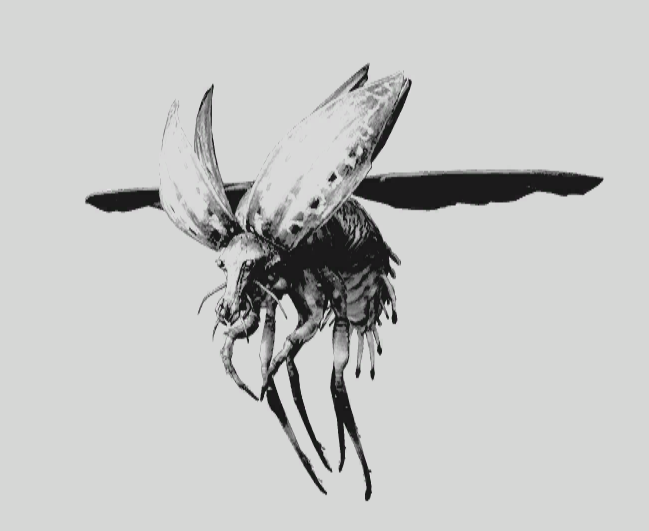Choke Beetle

CHOKE BEETLE. (See also, INSECTS, ORGANICS) In lieu of another qualified mind within a fifty-mile radius, I have named these creatures Goliathus Cetos Harriet, 1895. One can only pray it enters common parlance before the vernacular names Stalker Beetle and Choke Beetle become well known.
It simply beggars belief that those I speak to view these beetles as two separate species. The capacity for the public to bastardize the meticulous nomenclature of scientists like myself never ceases to flabbergast me. Even a cursory glance at this newly discovered gaseous variant reveals a simple mutation of the initial explosive Goliathus Cetos. A most curious defense mechanism, as it implies these beetles lives are worth expending as a means of protecting something. I have observed them behaving parental of their larvae, which leaves my leading hypothesis to be that they function (or at one time functioned) under a similar hierarchy to a beehive.
These specific mutations of the Goliathus Cetos are immune to the effects of smoke, however, exposure to it as larvae has caused their respiratory system to collapse. A condensed bubble of air, held in an inflated pocket beneath their elytra, serves as an alternative to the shriveled mouth. It supplies the body with oxygen until it expires, whereupon the oxygen expands and propels the latent gas outward in staggering volume. I have found guns reliable for causing this reaction.
